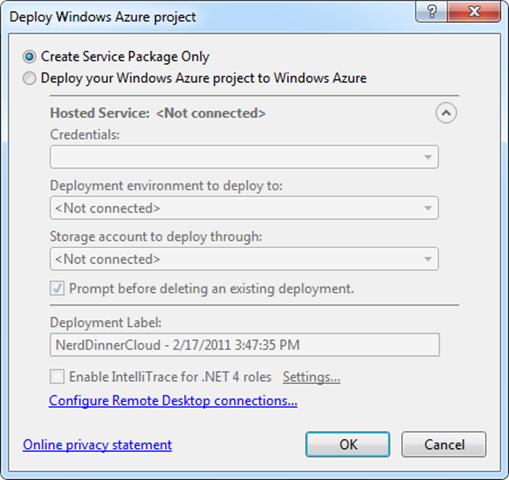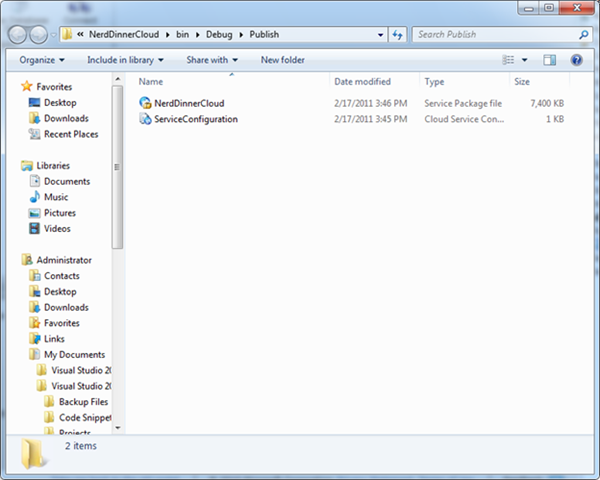Migrating and Deploying a Simple Cloud App: Part 6 - Preparing the Deployment Package
If you’ve started reading from this post, you’ll need to go through the previous parts of this series before going starting this one:
Introduction
Part 1: Setting Up a SQL Azure Server and Database
Part 2: Scripting the On-Premise Database for SQL Azure
Part 3: Executing the Scripts on the SQL Azure Database
Part 4: Creating the Cloud Solution
Part 5: Testing Locally
With testing complete, it’s time to prepare the deployment package. The deployment package contains the service definition for your Cloud solution along with the content and binaries for each of the roles. The package is zipped and encrypted, unless you set an environment variable to have the package created unencrypted.
The Service Configuration file is kept separate to the service package as it can be updated independently of the service package (updating setting values or increasing/decreasing the number of instances of roles, for example).
You could technically deploy your solution directly from Visual Studio. For the purposes of this walkthrough, we’re going to create a deployment package as we would in an organization where developers have to hand off code packages to others for implementation.
Creating the Service Package
Right-mouse click on the solution and select Publish.
From the Deploy Windows Azure project screen, select Create Service Package Only.
Click OK. Visual Studio will now prepare the deployment package.
When it’s done, the solution’s Publish folder will open, displaying the service package and the service configuration file.
If your organization requires handing off an implementation package or checking in files to a release management solution, these two files are all you need to deploy the solution to Windows Azure.
Depending on your organization, the IT Pros may be responsible for this next part, creating the hosted service, but for those of you who double as IT Pros, we’re going to walkthrough the process anyway.
![Deploying-a-Simple-Application_thumb[1] Deploying-a-Simple-Application_thumb[1]](https://msdntnarchive.blob.core.windows.net/media/MSDNBlogsFS/prod.evol.blogs.msdn.com/CommunityServer.Blogs.Components.WeblogFiles/00/00/00/60/29/metablogapi/3108.Deploying-a-Simple-Application_thumb1_thumb_2FB3B21B.png)

